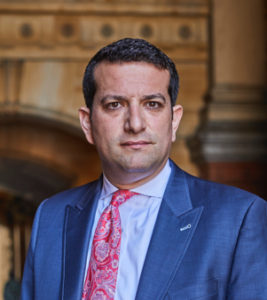Motorcyclists are more vulnerable than the average motorist. However, they can also find gear to help keep them safe on the road. People commonly wear helmets to protect their heads from bumps and sharp objects. Riders have different options to choose from and wonder what type of motorcycle helmet is the best.
Most motorcycle helmets pass safety inspections before stores sell them. Nevertheless, some products prove to be more effective than others. Still, an injury could happen during a collision with a car, truck, or fixed object.
You could find yourself in the hospital because of another person's negligence. Besides the driver, a manufacturer could also be at fault for a defect.
Causes of Motorcycle Crashes

Among the yearly reported traffic crash injuries, over 84,000 of them belong to motorcycle accidents. Motorcycles are smaller, so motorists might not notice them in time. Motorcyclists lack the same protection as car drivers. As a result, injuries are more severe.
Frequent causes of collisions are:
- Lane changes. A lane change can become unsafe if the individual does not check for other vehicles or use a signal. The motorcyclist might not know if the car plans to move over. The vehicle then collides with the motorcycle.
- Speeding. Someone is less likely to see and react to other people on the road. At higher speeds, they need more room between them and other vehicles. The driver could rear-end a motorcycle. Accidents at intersections can take place as well.
- Inexperienced drivers. Teens and other motorists who recently obtained a license usually do not have sufficient experience. The potential for an accident is at its highest in the months after license validation. Inexperienced drivers can make unsafe decisions and risk the safety of others.
- Unsafe road conditions. Motorcycles are more vulnerable to potholes and significant cracks on the street. Debris could fall from nature or a passing vehicle and hit the person behind. Some roads do not have the necessary traffic signs or signals to keep people safe.
In many situations, an injured motorcyclist or their loved ones can file a compensation claim.
Types of Motorcycle Helmets
Studies have shown helmets lower the potential of damage to the head by 69 percent. Helmets contain a sturdy plastic shell and foam interior. The material absorbs and dissipates the energy of an impact to reduce the force reaching the head. The headwear should not be loose to maximize efficiency.
Different types of motorcycle helmets exist to protect riders.
The ones you might see include:
- Full face. Coverage extends around the head and neck. The protective gear has a chin bar, and it comes with ventilation to reduce sweat. Recent designs added visors with the ability to adjust to the sunlight. Riders of various types of motorcycles choose full-face helmets.
- Half helmet. A half helmet covers the top of your head down to the brows. Many do not have a face shield, but they have significant airflow. The neck and the rest of the face do not have protection against impact.
- Open face. The top, back, and sides of the head receive protection. Some open-face helmets have visors to cover riders' faces. A person could purchase a face shield separately. Open-face helmets weigh less than their full-face counterparts but lack chin bars.
- Modular. Several people refer to modulars as flip-up helmets. They are a combination of an open face and a full face. You can flip the visor and chin bar to open the helmet. You can get protection from sunlight and debris. Some designs use a coating to reduce fogging.
- Off-road helmet. People mainly use off-road helmets if they bike away from the streets. The gear is not ideal for places like a highway. They typically provide maximum airflow and protection.
People tend to pick helmets based on their riding style and personal preference.
Do Helmets Need to Meet Safety Standards?
All motorcycle helmets have to meet safety requirements before they can go on the market. The reason is to ensure the safety of motorcyclists on the road. The DOT has minimum standards known as the Federal Motor Vehicle Safety Standard 218.
A couple of tests a helmet has to pass are penetration and Impact attenuation tests. The product needs to provide the wearer with a sufficient field of vision. The department has to make sure the headwear will remain in place during an accident. Once a helmet passes, the DOT issues a safety certification.
Some companies adhere to the Snell standard. The requirements are stricter, especially for the helmets riders use in drag racing. Assessments include chin bar testing, face shield penetration test, and shell penetration testing.
Which Motorcycle Helmet Is the Safest?
People with motorcycles should have effective protective gear in case of a crash. Among the choices of helmets, the full-face helmet is the safest option. Both your head and neck get the most protection. The sturdy material decreases your chances of a head or neck injury.
Full-face helmets have a visor to protect the wearer’s face during a ride. A study found motorcycle accident victims had a significantly reduced risk of facial injuries. Debris and sharp objects may not scratch or penetrate the person's head as easily.
The chin bar of a full-face helmet is another reason why many riders prefer the gear type. Around 50 percent of impacts from accidents occur on the front near the chin. A blow to the chin or jaw can result in a hospital visit. The chin bar gives your chin additional protection to prevent a head injury or a jaw fracture.
You can still have adequate peripheral vision despite the face and head coverage. Manufacturers continue to create designs to improve the motorcycle experience. However, injuries can occur after severe crashes, even with the safest helmet.
Traumatic Brain Injury From a Motorcycle Accident
One injury a person can sustain from a motorcycle accident is a traumatic brain injury. Every year, over 223,000 hospitalizations are for a traumatic brain injury. Motorcycle collisions make up a portion of the statistics. The condition can become fatal, especially if the person does not get treatment.
A traumatic brain injury is when a bump or jolt to the head damages the brain. The force of a blow impacts a person’s regular brain function. Most cases involve closed head injuries, but penetration from a sharp object can occur.
Young children and older adults are more at risk of a traumatic brain injury. Symptoms can take a few days to manifest and range in severity. A victim of a motorcycle accident might experience headaches, confusion, mood changes, fatigue, or blurred vision.
Acute symptoms include slurred speech, dilated pupils, and seizures. Once you notice any of the warning signs, you should find a doctor immediately. Afterward, find a lawyer to see if you can acquire compensation for damages.
Long-Term Effects
Treatment plans depend on the person and the severity of the injury. Some patients require mostly rest before they can slowly return to work. Other people need a healthcare professional to monitor them. Medicines, therapies, and surgeries are possible treatment options.
However, a person could have to manage multiple long-lasting effects. The risk of long-term impact increases if someone does not get the proper care. The outcome depends on where the damage happened to the brain. An injury around the forehead can alter an individual’s ability to reason or problem solve. They might have less control over impulses.
A person experiences issues with speech and logic if the damage is on the left side of the head. On the right side, the patient has difficulty with the performance of daily activities and visual processing. Overall, traumatic brain injuries increase the risk of long-term balance problems.
Other people have reported memory loss and paralysis. They have a higher chance of seizures in the future as well.
Motorcycle Helmet Defects
Companies usually let customers know if a helmet received certification. In some cases, the helmet deteriorated over time due to a person’s usage. Nevertheless, a few products come with defects and allow riders to sustain injuries. A manufacturer might have used an unsafe design or did not comply with retention requirements.
The helmet fastener or chin strap keeps the headwear secure on the person’s head. If the strap fails to work correctly, the helmet could move out of place or slip off during a ride. The company could have used inefficient material. The shell or foam may not have resisted impact as well as people expected.
If you believe your injuries are not your fault, you should find a lawyer. A motorcycle injury attorney could discover a manufacturer is to blame for your damages.
What to Do if You Suspect a Faulty Helmet
Hospital bills generally become costly, especially if you need to stay for multiple days. Many people begin to worry about all the expenses they have to face. Personal injury law allows you to receive compensation for your motorcycle injuries.
You could sue the other motorist for damages. However, you might discover the creator of your motorcycle helmet is another possible liable party.
Here is what you can do after a crash:
- Call emergency services for the police and an ambulance.
- If another vehicle got involved, get the driver’s insurance information. Collect contact details of any witnesses as well.
- Take pictures of the accident scene and any visible injuries.
- Gather photos of the helmet if it cracked open before you collect any fallen fragments. If the headwear fell off, document where it landed.
- You should not destroy, throw away, or alter the defective helmet. Your lawyer needs the headwear to stay in its current state as evidence of product liability.
- Seek medical treatment as soon as you can. Keep copies of all records.
- Do not speak to the insurance company. Instead, find a motorcycle accident attorney near you.
Most helmets have a label on the inside. The label should list the manufacturer’s name, address, model type, manufacture date, and materials. You can use the information to contact the company for compensation.
How to Prove Liability for a Motorcycle Helmet Defect

A defective helmet would result in a product liability claim. One of the first steps is to prove you sustained injuries and other losses following the accident. Medical records are pieces of evidence you would use to show the presence of damage.
Then, you need to demonstrate how the motorcycle helmet had a defect. A flaw could have occurred during production, and the company should have noticed it. Perhaps, the design itself was not reasonably safe for creation. A lack of warnings or labels can make the manufacturer liable.
The opposing party could argue you did not wear the helmet the right way. You would need to prove you used the headwear as the manufacturer intended.
The last step is to connect your injuries to the helmet defect. Your head injury developed as a result of a faulty strap or construction material. Once you prove each element, your attorney negotiates a settlement. You may also hold the distributor and other entities accountable for an unsafe helmet.
How Long Do You Have to File a Lawsuit?
You can lose your right to compensation if you do not file a claim in a given amount of time. Every state has a statute of limitations, but the specific rules may vary. Usually, the clock begins to run on the day of the accident. You could have two, three, or four or more years.
Several states have a discovery rule. The rule allows the deadline to begin when the victim should have discovered their injuries. Some places have enacted a statute of repose as well. The statute means you cannot bring forth a claim after a specific period after an event occurred.
An example would be the sale or delivery of the helmet. The statute could be 10 years or 12 depending on the state. The law bars actions even if you do not notice the defect until years later. Prevent missed deadlines and consult a motorcycle injury lawyer.
